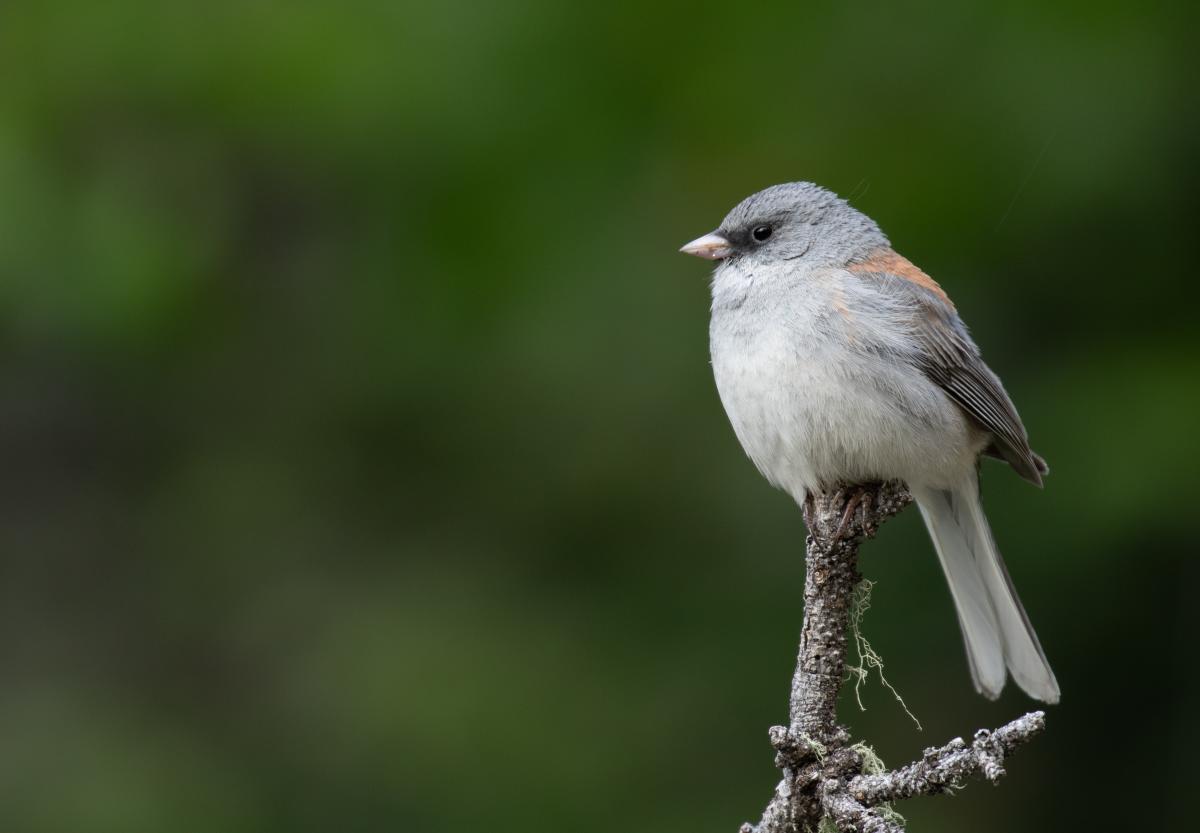The house finch is one of the state's most common backyard species. Photograph by Christina Selby.
NEW MEXICO IS VAST AND ECOLOGICALLY DIVERSE. The birds that frequent your Taos backyard will likely differ from those in Elephant Butte, Farmington, or Tucumcari. Still, for most fledgling birders, it’s the environment most easily observed—especially during the past year of travel restrictions and working from home. “If you have created a good habitat—trees, bushes, flowers, water—you’ll get a greater array of birds,” says Robert Templeton, a retired educator and northern New Mexico birder. A feeder with a variety of seed and suet can help. “Sit still and quiet in different spots,” he says. “You’ll be surprised what shows up.”
House Finch
Perhaps the state’s most common backyard species, this small bird (about six inches from bill through tail) has a large beak and a warbly song. The male is rosy red, while females are brown, with streaked chests. “While this guy is native to the western United States and Mexico, it was introduced to Long Island, New York, in 1939 and is now found across the nation,” says Templeton.
 The dark-eyed junco can be a common site in the winter. Photograph by Christina Selby.
The dark-eyed junco can be a common site in the winter. Photograph by Christina Selby.
Dark-eyed Junco
When the snow flies, a small, somewhat dull-gray bird shows up at feeders, picking through seeds the finches toss to the ground. With 15 varieties of this ground feeder inhabiting the state, juncos can vary greatly in appearance, but sometimes feature a jet-black hood. “New Mexico hosts five subspecies of dark-eyed junco in the winter,” says Templeton. “But only one, the gray-headed junco, actually breeds in New Mexico—high up in the mountains during the summer.”
 Northern flickers are the most common year-round birds in New Mexico. Photograph by Jim O'Donnell.
Northern flickers are the most common year-round birds in New Mexico. Photograph by Jim O'Donnell.
Northern Flicker
With a flash of head-turning reddish orange from under the wings and tail, the flicker disappears. While one of the most common year-round birds in the state, these large, quick woodpeckers remain relatively unknown to the casual observer. Although their brown backs with black bars help them blend in with the bark on trees, look for the flicker—and its red or black whisker and black bib markings—along edges of fields, parks, or the open spaces in your yard.
 Loud and curious, this scrub jay is full of attitude. Photograph by Christina Selby.
Loud and curious, this scrub jay is full of attitude. Photograph by Christina Selby.
Woodhouse’s Scrub Jay
Large, lanky, and full of attitude, this mostly blue bird with a gray belly was known as the western scrub jay until recently. Loud and curious, it hangs out at the feeder or on a fence post even after other birds have scattered and will even talk back to you. Jays of all sorts turn up across most of the state, but which type depends on your location: Steller’s jays in the north, blue jays in the east, Mexican jays near Silver City.
 Western tanager's are easy to spot with their gorgeous yellow wings. Photograph by Christina Selby.
Western tanager's are easy to spot with their gorgeous yellow wings. Photograph by Christina Selby.
Western Tanager
While the tanager spends the summer high in New Mexico’s tallest peaks, the medium-size bird with distinctive coloration makes an impression against April’s greening grasses. “People who don’t think of themselves as birders end up talking about the gorgeous yellow bird with black wings and a red head,” says Templeton. “In spring, it passes through lower elevations searching out early fruits and, much to my beekeeping neighbor’s chagrin, yummy honeybees.”
 The calliope hummingbird is the smallest hummingbird north of Mexico. Photograph by Shutterstock.
The calliope hummingbird is the smallest hummingbird north of Mexico. Photograph by Shutterstock.
Calliope Hummingbird
One of at least three hummingbird species seen throughout the state, the tiny calliope—the smallest hummingbird north of the Mexican border—has big, aggressive energy. Males, with a brilliant green head and back and a purple neck, often sit high up in a tree, surveying their realm and chasing off anyone they don’t like. They take nectar from feeders and tubular flowers and even pluck small flying insects from the air.


